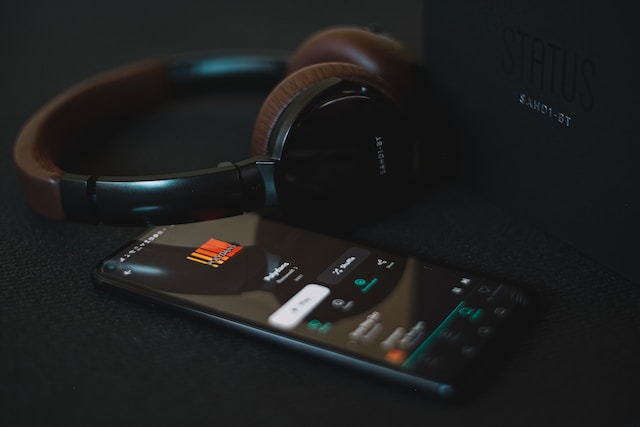Music Distribution: A Comprehensive Guide to Reaching Your Audience
In today’s digital age, music distribution plays a crucial role in the success of artists and musicians. Gone are the days when physical copies of albums were the primary means of reaching an audience. With the advent of streaming platforms and online music stores, musicians now have the opportunity to distribute their music to a global audience with just a few clicks. In this comprehensive guide, we will explore the ins and outs of music distribution, from understanding the different types of distribution to choosing the right distribution platforms and maximizing your reach. Whether you’re a seasoned musician or just starting your musical journey, this guide will provide you with valuable insights and strategies to effectively distribute your music.
Understanding Music Distribution
Before diving into the world of music distribution, it’s essential to have a clear understanding of what it entails. Music distribution refers to the process of making your music available to the public through various channels and platforms. It involves getting your music onto streaming services, online music stores, radio stations, and other outlets where listeners can discover and consume your music. Music distribution is the bridge that connects artists with their audience, allowing them to share their creations on a global scale.
Types of Music Distribution
There are primarily two types of music distribution: physical and digital. Physical distribution involves the production and delivery of physical copies of your music, such as CDs, vinyl records, or cassette tapes. While physical distribution still has its place for collectors and die-hard fans, it has become less prevalent in the digital age.
Digital distribution, on the other hand, has become the norm for most artists and not musicians. It involves making your music available in digital formats, such as MP3s or streaming files, through online platforms and services. Digital distribution offers numerous advantages, such as cost-effectiveness, instant availability, and global reach. It allows artists to distribute their music to a vast audience without the need for physical manufacturing and distribution processes.
Choosing the Right Distribution Platforms
In order to effectively distribute your music, it’s crucial to choose the right distribution platforms that align with your goals and target audience. There are several popular music distribution platforms available, each with its own features, pricing structures, and reach. Here are a few of the most popular platforms:
- Tunecore: Tunecore is one of the leading digital distribution platforms, offering artists the opportunity to distribute their music to a wide range of online stores and streaming services. It provides a user-friendly interface, detailed analytics, and transparent revenue reporting.
- DistroKid: DistroKid is known for its simplicity and affordability. It allows artists to distribute unlimited music for a yearly fee, making it an attractive option for independent musicians and those looking to release multiple projects.
- CD Baby: CD Baby has been in the music distribution game for over two decades and has built a solid reputation among artists. It offers a range of services, including distribution, publishing administration, and sync licensing.
Maximizing Your Reach
Once you’ve chosen the right distribution platforms, it’s important to implement strategies to maximize your reach and get your music in front of as many listeners as possible. Here are a few tips to help you make the most out of your music distribution:
- Optimize your metadata: Metadata is the information attached to your music, such as titles, artist names, and genre tags. Make sure to optimize your metadata to ensure your music is discoverable when users search for specific keywords or genres.
- Utilize social media and online platforms: Leverage the power of social media and online platforms to promote your music. Create engaging content, interact with your audience, and collaborate with influencers to expand your reach.
- Build a strong online presence: Establishing a strong online presence is key to attracting new listeners and growing your fanbase. Create a professional website, maintain active social media profiles, and engage with your audience regularly.
- Collaborate with other artists: Collaborating with other artists can help expand your reach and expose your music to new audiences. Consider collaborating on songs, features, or even joint marketing campaigns to tap into each other’s fanbases.
Key Takeaways
- Music distribution is the process of making your music available to the public through various channels and platforms.
- There are two main types of music distribution: physical and digital. While physical distribution still exists, digital distribution has become the norm in the digital age.
- Choosing the right distribution platforms is crucial to effectively reach your audience. Platforms like Tunecore, DistroKid, and CD Baby offer different features and reach.
- To maximize your reach, optimize your metadata, utilize social media and online platforms, build a strong online presence, and collaborate with other artists.
In the end, music distribution is an essential aspect of building a successful music career in today’s digital landscape. By understanding the types of distribution, choosing the right platforms, and implementing effective strategies, you can reach a global audience and share your music with the world. Remember to optimize your metadata, leverage social media, build an online presence, and collaborate with other artists to expand your reach. And if you’re looking to further enhance your knowledge and skills in the business of entertainment, consider taking the “NYU Business of Entertainment” online course and certificate program offered by Yellowbrick. Start distributing your music today and embark on a journey towards reaching your full potential as a musician.






